Edin Expression in the Fat Body Is Required in the Defense Against Parasitic Wasps in Drosophila melanogaster
- PMID: 25965263
- PMCID: PMC4429011
- DOI: 10.1371/journal.ppat.1004895
Edin Expression in the Fat Body Is Required in the Defense Against Parasitic Wasps in Drosophila melanogaster
Abstract
The cellular immune response against parasitoid wasps in Drosophila involves the activation, mobilization, proliferation and differentiation of different blood cell types. Here, we have assessed the role of Edin (elevated during infection) in the immune response against the parasitoid wasp Leptopilina boulardi in Drosophila melanogaster larvae. The expression of edin was induced within hours after a wasp infection in larval fat bodies. Using tissue-specific RNAi, we show that Edin is an important determinant of the encapsulation response. Although edin expression in the fat body was required for the larvae to mount a normal encapsulation response, it was dispensable in hemocytes. Edin expression in the fat body was not required for lamellocyte differentiation, but it was needed for the increase in plasmatocyte numbers and for the release of sessile hemocytes into the hemolymph. We conclude that edin expression in the fat body affects the outcome of a wasp infection by regulating the increase of plasmatocyte numbers and the mobilization of sessile hemocytes in Drosophila larvae.
Conflict of interest statement
The authors have declared that no competing interests exist.
Figures

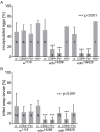
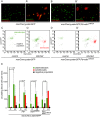
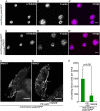
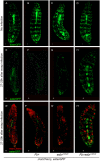
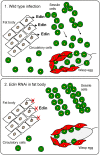
Similar articles
-
Tissue communication in a systemic immune response of Drosophila.Fly (Austin). 2016 Jul 2;10(3):115-22. doi: 10.1080/19336934.2016.1182269. Epub 2016 Apr 26. Fly (Austin). 2016. PMID: 27116253 Free PMC article.
-
The raspberry Gene Is Involved in the Regulation of the Cellular Immune Response in Drosophila melanogaster.PLoS One. 2016 Mar 4;11(3):e0150910. doi: 10.1371/journal.pone.0150910. eCollection 2016. PLoS One. 2016. PMID: 26942456 Free PMC article.
-
Encapsulation and Melanization Are Not Correlated to Successful Immune Defense Against Parasitoid Wasps in Drosophila melanogaster.Cells. 2025 Jan 3;14(1):46. doi: 10.3390/cells14010046. Cells. 2025. PMID: 39791747 Free PMC article.
-
Immunogenetic aspects of the cellular immune response of Drosophilia against parasitoids.Immunogenetics. 2001;52(3-4):157-64. doi: 10.1007/s002510000272. Immunogenetics. 2001. PMID: 11220617 Review.
-
Parasitoid-induced cellular immune deficiency in Drosophila.Ann N Y Acad Sci. 1994 Apr 15;712:178-94. doi: 10.1111/j.1749-6632.1994.tb33572.x. Ann N Y Acad Sci. 1994. PMID: 7910721 Review.
Cited by
-
Macrophages and Their Organ Locations Shape Each Other in Development and Homeostasis - A Drosophila Perspective.Front Cell Dev Biol. 2021 Mar 11;9:630272. doi: 10.3389/fcell.2021.630272. eCollection 2021. Front Cell Dev Biol. 2021. PMID: 33777939 Free PMC article. Review.
-
Haemocyte-mediated immunity in insects: Cells, processes and associated components in the fight against pathogens and parasites.Immunology. 2021 Nov;164(3):401-432. doi: 10.1111/imm.13390. Epub 2021 Aug 2. Immunology. 2021. PMID: 34233014 Free PMC article. Review.
-
Experimental horizontal transfer of phage-derived genes to Drosophila confers innate immunity to parasitoids.Curr Biol. 2025 Feb 3;35(3):514-529.e7. doi: 10.1016/j.cub.2024.11.071. Epub 2024 Dec 20. Curr Biol. 2025. PMID: 39708795
-
Inhibition of the Notch signal transducer CSL by Pkc53E-mediated phosphorylation to fend off parasitic immune challenge in Drosophila.Elife. 2024 Nov 6;12:RP89582. doi: 10.7554/eLife.89582. Elife. 2024. PMID: 39503739 Free PMC article.
-
Serotonergic neurons regulate the Drosophila vascular niche to control immune stress hematopoiesis.Nat Commun. 2025 Jun 3;16(1):5152. doi: 10.1038/s41467-025-60493-y. Nat Commun. 2025. PMID: 40461546 Free PMC article.
References
-
- Benassi V, Coustau C, Carton Y. Insect immunity: A genetic factor (hrtp) is essential for antibacterial peptide expression in drosophila after infection by parasitoid wasps. Arch Insect Biochem Physiol 2000; 43(2): 64–71. - PubMed
Publication types
MeSH terms
Substances
LinkOut - more resources
Full Text Sources
Other Literature Sources
Molecular Biology Databases

